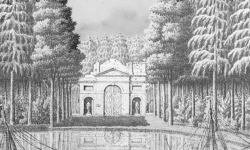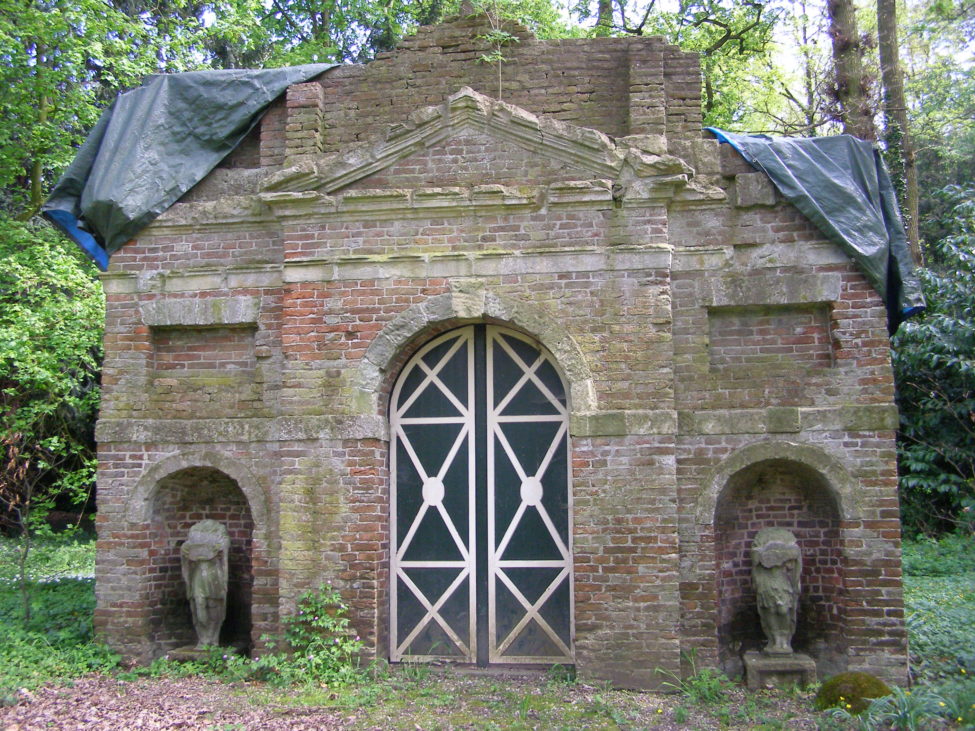De ‘Rouina’ van Huys ten Donck revisited

Over five years ago I posted a piece about the ruin in the park of Huys ten Donck, near Ridderkerk. The estate accounts mention the ruin had been stuccoed in 1777. Based on that, and on the only available photo of a contemporary painting, I concluded that the glass painting made by Zeuner shows this stuccoed front. The original, however, shows a brick wall. It appears this old photo is very bad (unfortunately I have no better photo). I still stand by my conclusion, although this new information raises several other questions.
Over five years ago I posted a piece about the ruin in the park of Huys ten Donck, near Ridderkerk. The estate accounts mention the ruin had been stuccoed in 1777. Based on that, and on the only available photo of a contemporary painting, I concluded that the glass painting made by Zeuner shows this stuccoed front. The original, however, shows a brick wall. It appears this old photo is very bad (unfortunately I have no better photo). I still stand by my conclusion, although this new information raises several other questions.



